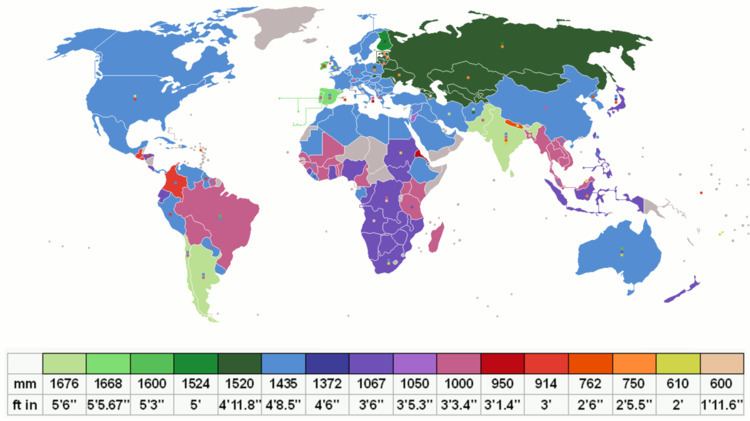 | ||
Bosnian gauge is a railway track gauge of 760 mm (2 ft 5 15⁄16 in). It was used extensively in the former Austro-Hungarian Empire as a standardised form of narrow gauge. The name is also used for lines of the same gauge outside Bosnia, for example in Austria. Similar track gauges are the 2 ft 6 in (762 mm) and 750 mm (2 ft 5 1⁄2 in) gauge.
History
After a British proposal the 1878 Berlin Congress permitted Austria-Hungary to occupy and govern Bosnia-Herzegovina instead of Turkey, the 190 km long Brod - Zenica military railway was built to support maneuvers and supply troops. It was completed in 1879, using the 760 mm (2 ft 5 15⁄16 in) temporary tracks and rolling stock used during the construction of the recently finished Temesvár-Orsova line. The Zenica - Sarajevo extension opened in 1882, with a loading gauge the same as that used on 1,000 mm (3 ft 3 3⁄8 in) gauge railways, which was thought to be sufficient for general traffic including passenger services.
The Brod - Zenica - Sarajevo Bosna Bahn provided the basis for the narrow gauge railway network which was later established in Bosnia-Herzegovina. In barely two decades a national 760 mm network was built. By the 1890s this stretched through Mostar to the Dalmatian border at Metkovic, and to Gruž, a suburb of Dubrovnik, on the coast of the Adriatic Sea. This narrow gauge main line carried much heavier traffic than many of the minor standard gauge main lines across the Austro-Hungarian Empire. At the time of their introduction, the Bosnia-Herzegovian National Railways' 2-4-2 express locomotives of 1894-96 were the fastest narrow gauge locomotives in Europe, with a 60 km/h permitted top speed.
The establishment of the fast-growing network, whose length by the start of the 20th centuries exceeded 1000 km making it the once largest interconnected narrow gauge network in Europe, secured a high reputation for the Monarchy's engineering corps amongst international professional circles.
It was the success of the Bosnian narrow gauge net which gave impetus after the turn of the century to the large-scale building of 760 mm gauge lines across all other territories of the Monarchy. The technical solutions pioneered there were used later on all the narrow gauge railways of Austria-Hungary.
